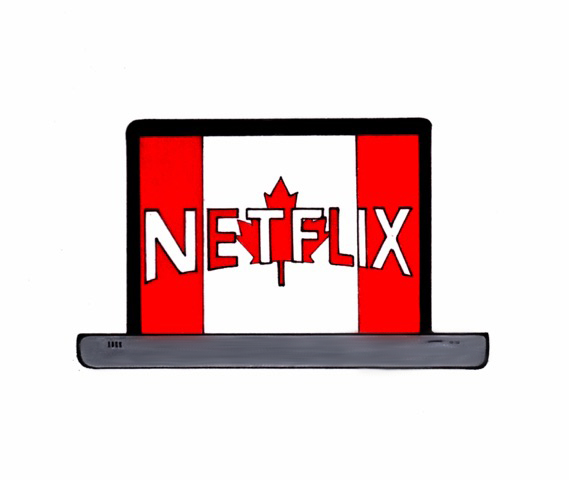Netflix’s recent decision to crack down on the use of virtual private networks (VPN)—location maskers that permit international subscribers to access content reserved for other countries—should ultimately result in greater viewership of Canadian productions. While VPN providers—including Faraz Ali, the digital marketing manager for PureVPN—have expressed their skepticism towards Netflix’s ability to cut off their service, the streaming service has asserted that it will be taking relentless measures to uphold its licensing agreements. Admittedly, there will always be a way to get around blocks, but the possibility of doing so will either be a higher cost for a VPN or running the risk of using those available for free; however, there is a silver lining. If Netflix succeeds, it will face an increase in demand for more varied content. In Canada, it should pursue a strategy of adapting its content selection to include more domestically-produced content. Hopefully, this will cause growth in both the availability and creation of Canadian-made content.
Currently, the problem with Canadian content—at least of the sort that is available to stream—is not strictly the quality. While it is not uncommon for independent French Canadian films to outrank American blockbusters in Quebec’s box office, it is a different story online. Ironically, Netflix UK offers more French Canadian films that are unavailable on Netflix Canada. For Canadian content to be consumed online, it first has to be there.
Great Canadian content is to be found on Netflix, buried behind mainly American-produced original series and newly released American blockbusters. For instance, in 2014 Netflix adopted the Canadian mockumentary, Trailer Park Boys, and later produced the series Between in collaboration with Shomi—Rogers' streaming service. While a boost to Canadian content online, there is still a significant imbalance in the amount of American versus Canadian content on the Netflix homepage. The website does not yet stream critically-acclaimed shows such as Being Erica, 19-2, Unité 9, Série Noire, and Schitt’s Creek.
Netflix must expand its provision of Canadian television while also showcasing it to Canadian audiences. Although Sean Carey, Netflix’s Vice President of Content Acquisition, revealed in an interview with the Huffington Post that the streaming service is currently funding the production of original and local series, the service must also commit to the marketing of these programs. Netflix is so far being outflanked in this regard. Bell’s CraveTv and Roger’s Shomi have moved to acquire the licensing rights of both French and English productions. CraveTV has already begun catering shows specifically for a Canadian audience (titled the All-Canadian Collection), such as Saving Hope, Flashpoint, and Motive and ventured into the production of Canadian TV series—it will launch its new comedy, Letterkenny, this Sunday, Feb. 7.
At $6 per month, CraveTV rivals the price of Netflix, yet has much more to offer in terms of national media. Shomi, a joint venture with Shaw TV, equally lures subscribers through the provision of a wider Canadian selection and sets the example for its American counterpart, boosting the Quebec comedy classic Bon Cop Bad Cop and indie dramas such as Take this Waltz.
Without the constraint of time slots, commercial breaks, and television ratings, Netflix, unlike Radio Canada and CBC, has the possibility of creating niche and high-quality artistic productions. The rise of threats to Netflix’s monopoly—however weak Shomi and CraveTV may seem in comparison—must push the streaming service to deliver content that will both appeal to Canadian consumers and promote Canadian streaming and film industries. By competing with Shomi and CraveTV, it must necessarily finance the young directors and screenwriters of Canada. It may also be worth considering a subscription in CraveTV in order to stimulate this competition and improve the development and marketing of Canadian creative content.









